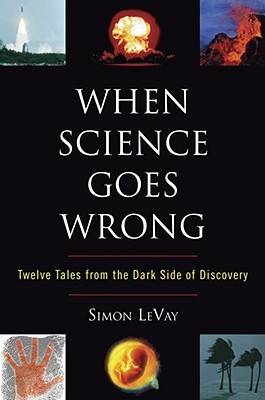

When Science Goes Wrong: Twelve Tales From the Dark Side of Discovery
by Simon LeVay
Brilliant scientific successes have helped shape our world, and are always celebrated. However, for every victory, there are no doubt numerous little-known blunders. Neuroscientist Simon LeVay brings together a collection of fascinating, yet shocking, stories of failure from recent scientific history in When Science Goes Wrong.From the fields of forensics and microbiology to nuclear physics and meteorology, in When Science Goes Wrong LeVay shares twelve true essays illustrating a variety of ways in which the scientific process can go awry. Failures, disasters and other negative outcomes of science can result not only from bad luck, but from causes including failure to follow appropriate procedures and heed warnings, ethical breaches, quick pressure to obtain results, and even fraud. Often, as LeVay notes, the greatest opportunity for notable mishaps occurs when science serves human ends. LeVay shares these examples: To counteract the onslaught of Parkinson’s disease, a patient undergoes cutting-edge brain surgery using fetal transplants, and is later found to have hair and cartilage growing inside his brain. In 1999, NASA’s Mars Climate Orbiter spacecraft is lost due to an error in calculation, only months after the agency adopts a policy of “Faster, Better, Cheaper.” Britain’s Bracknell weather forecasting team predicts two possible outcomes for a potentially violent system, but is pressured into releasing a ‘milder’ forecast. The BBC’s top weatherman reports there is “no hurricane”, while later the storm hits, devastating southeast England. Ignoring signals of an imminent eruption, scientists decide to lead a party to hike into the crater of a dormant volcano in Columbia, causing injury and death. When Science Goes Wrong provides a compelling glimpse into human ambition in scientific pursuit.
Release Date:
March 24, 2008

